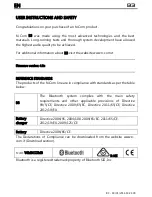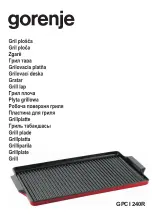
Page 17
Front ballast installation and use of the cockpit
The cockpit has been completely redesigned: it has an aerodynamic shape
integrated into the leg-cover, it can be removed using a zipper and can even be
combined with two other elements beneath the instrument compartment:
•
a 4.5 L ballast (standard) or
•
A second parachute (optional).
In order to render the cockpit more stable for movements on the ground, a plastic
buckle has been added to the chest strap, which limits the changes in inclination
and prevents it from falling over.
The ballast discharge tube has been installed in such a way so that it leads into
the right-hand pocket, from which the tap can be easily extracted and operated.
The procedure for installing the ballast is illustrated below:
Open the zipper beneath the instrument compartment (1) to access the ballast
lodging (2). Next, open the Velcro over the discharge tube’s outlet hole (3) and
insert the tube (4). There is a second through-hole (5) inside the harness, which
allows the discharge tube to be inserted into the external pocket, where it can be
hidden and extracted whenever necessary (6).
Ballast installation under the seat
The harness offers the possibility of positioning 5.5 liter ballast beneath the seat.
In order to take advantage of this feature, just install the ballast in the container
beneath the seat, insert the discharge tube into the appropriate hole in the
container and feed it through the hole on the lower left of the harness so that it
ends up in the dedicated external pocket.
In this manner the tap can be easily accessed by the pilot on the left-hand side of
the harness while in flight. The ballast lodging is located beneath the seat.
Open the zipper to access (1) the lodging, insert the discharge tube into the
through-hole on the right (2) and install the ballast (3). Insert the tube into the slot
on the right hand side (4) and slide it through the hole that leads from the inside of
4
1
2
3
5
6
4
1
2
3








































